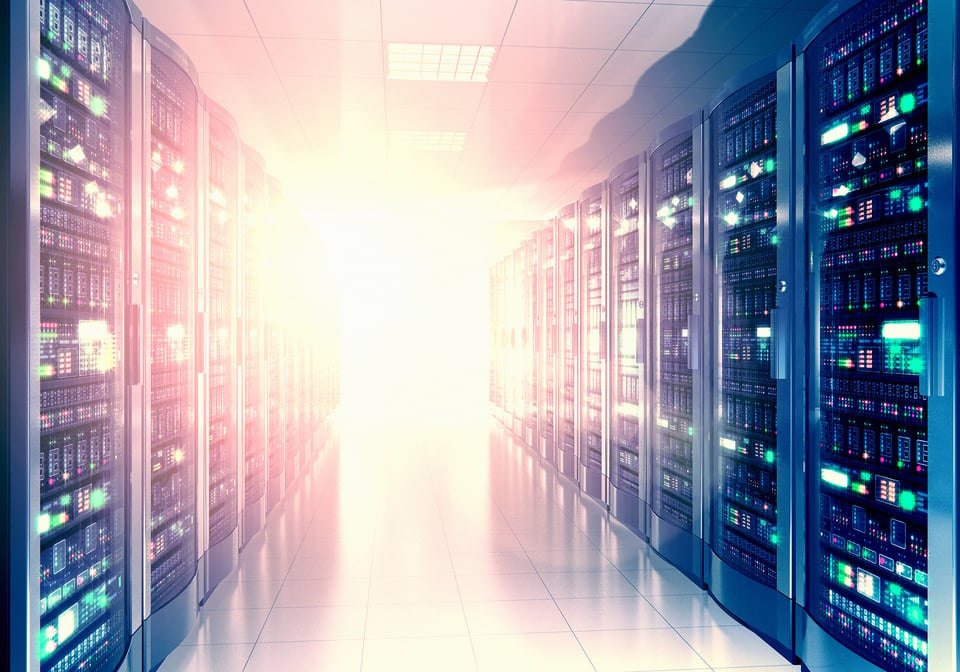by Charles Sybert –
Customer perception of an insurance company is largely defined by everyday interactions and transactions. While most experiences are pleasant, the expectations of increased real-time personalized interactions are becoming the standard. During a catastrophe, it becomes critical to maintain uptime as claims are rapidly being entered, processing high payment volumes, and examining policy documents. Most legacy systems and architecture will crumble under the pressure and destroy any goodwill with the insured. To solve this challenge of uptime, improved advanced analytics, and the latest user experience trends, more insurance companies are migrating legacy systems to the cloud.
Why Move to the Cloud?
Migration to the cloud is more than the location of where the software is run but rather access to capabilities and protections a single company will find difficult and expensive to maintain.
Security
When the cloud-first started, there were concerns about data protection, data co-location, and other data security issues. Over the years, this concern has become moot as the cloud providers have made significant investments in security, hardening the platforms and increasing the use of technology to protect data. For example, one cloud provider provides encryption, key management, and continuous monitoring with AI to detect variations in workloads.
Cost Savings
According to one major cloud provider, a company can save an average of 31% of infrastructure costs versus hosting their own data center. When reviewing the company’s physical assets, things like personnel security, the data room A/C, and other repairs to keep the server room operational are removed. In addition to the physical space savings, the cost of the physical server purchase and maintenance is no longer a headache to manage.
Access to technology
Using a cloud as a service technology provides access to technology that is not feasible on-premises, such as AI and machine learning. Spinning up complex environments such as Kubernetes containers, data lakes, and other calculation intensive solutions are done in minutes. The flexibility allows the technologist to create sandboxes to prove the technology and not be focused on sharing servers or environment setup.
Simplification of Disaster Recovery
Instead of maintaining two or more physical data centers, the cloud provides the backup site(s) option anywhere in the US or worldwide. Previously effort would be invested in physical maintenance, data transfer, and software upkeep. The majority of the required orchestration is offloaded to the cloud technology using the cloud.
Growth Acceleration
As companies grow, organically or through mergers and acquisitions, the Cloud provides on-demand IT resources that allows scaling for organic growth, or for integrating new acquisitions to existing platforms without having to wait for weeks or months for additional hardware or computing capabilities. Making a move to the cloud
For most companies, the migration to the cloud is a simple decision to make but a complicated one to implement. The first step is to perform an application assessment to understand what needs to be migrated and the business value of the migration.
Assessment
Before investing effort and resources into the migration, evaluate the current technology stack against the business goals and vision. Special attention must be given to the legacy applications and their ability to meet the business need versus replacement. Sometimes it makes sense to maintain legacy applications as they fulfill a business differentiating capability that cannot easily be replaced or is core to the business that is not able to be unwound without significant work effort.
After the list of applications is determined, the next step is to understand each application’s impact on other applications, data access needs, and overall interaction within the technology world. When performing the analysis, do not forget to focus on the user community making sure reports and third-party interfaces are not overlooked.
This step is the most difficult as it requires tribal knowledge from the key players that are most likely already overtaxed with keeping the operation running. Too often, these efforts can linger on for quarters due to the desire to strive for perfection. We have found forcing a focused time-boxed activity with everyone in a collaborative setting yields the best results.
The result of the effort is to build a holistic view of the applications, data, interfaces, and user impact of what can be moved to the cloud. Using this as input, the team will need to force rank each logical grouping of technology/applications on a scale of the ideal candidate to moderate value. During the evaluation, things like maintenance cost, business criticality, system age, complexity to unwind, etc., should be included. This will be a very challenging and complex process to go through but must be done to ensure a return on investment.
Assessment Output
The assessment should have the following outputs:
Blueprint – a graphical representation of the current systems with documentation explaining the systems, interactions, data migration, user impact, and third-party interactions
Cloud Migration Recommendation – Rationale for each system to either be migrated, left on-premises, or replaced with newer technology
Application Ranking – Logical grouping of applications ranked by value and business impact
Assessment Tips
Core System Replacement – It is easy to say that replacing the core system may be the ideal solution, but it may be better to migrate it to the cloud. Suppose the system meets the business needs but has limitations such as requiring a batch cycle, the cloud technologies enable the legacy application to become more real-time.
Follow the data – When understanding the impact of a system, follow the data flow, especially for finable events such as government stat reporting, financial ledger, etc
It’s okay to leave some unknowns – when planning implementation efforts, there will always be a level of uncertainty. There will become a point in the assessment where the majority of the functionality is covered, but the amount of effort to find the answers will be more than the return.
Cloud Implementation Options
After understanding what applications need to be migrated, a decision needs to be made on how they will be migrated. RCG has developed a propriety cloud migration implementation methodology that organizations can leverage upon.
Purchase a cloud-enabled software
Many cloud-based core systems and Insurtech software are available to replace legacy systems. The standard implantation SDLC will be followed, and there will be a level of customization to meet the business needs. This option is best for upgrading software that meets the majority of the business needs or purchasing new Artificial Intelligence (AI) based software such as Claim Fraud Detection.
RCG CloudWorks
Migrate a portion of the capabilities as is to the cloud and leave the balance on-premise. This approach does not update or refactor code but requires interface development efforts between premises and the cloud. This option balances the need for the increased flexibility of high-demand capabilities with timeline and financial concerns.
RCG CloudReplace
Migrate and select optimization of the codebase to the cloud with nothing remaining on-premises. During this approach, the core of the code remains untouched but inefficient operations or non-intuitive processing are updated. This option balances migration with updates resulting in a more efficient mainframe experience.
RCG CloudConnect
Migrate the code base but provide a new UI/UX experience. The business processes are evaluated during this approach, and the user experience is reimaged, creating a modern feel. This option enables an increased integration with trusted data foundation services and improved usability.
Migration Tips
Mix and match options – Evaluate each migration as an independent project and use the best choice for the logical grouping. For example, the policy system may be best to use RCG CloudConnect due to the years of business logic built into it, while the reporting system may be best to RCG CloudWorks as a migration.
Embrace Insurtech – Insurtechs are providing focused business capabilities unlike any time before. Part of the solution could include a mainframe migration coupled with an Insurtech installation to modernize the business process at a lower cost and risk
Cloud Migration Roadmap
The roadmap will define the order and timing of the implementation effort using the assessment output as input.
Solution Architecture Design
The cloud provides capabilities and tools the current enterprise does not have access to nor is designed to accommodate. The solution design is focused on the final state of the application landscape of what technology is replaced with new systems, which applications are upgraded to accommodate the latest cloud technology, and which systems are migrated to the cloud “As-Is” taking advantage of Dockers and Kubernetes. In addition, data access, data transformation, third-party interfaces, user interaction, and security must be layered to build a vision of implementation.
Defining the design is a complex balancing of current capabilities against the art of the possible to maintain the unique business attributes that make the company differentiated in the marketplace.
Implementation Plan
The implementation plan is a mix of art and science to produce a multiyear view of implementation effort ordered by business priority and technology impact. Using the solution design and application ranking as a guide, enabling the final vision will require defining business value deliverable phases. The science part is focused on the efforts, interdependencies, and order to migrate or build the technology from discussion with the architects, developers, and other technologists.
The art or creative aspect is to understand “the how” of each migration and order it in a way that delivers the most business value, keeps the team fully engaged, and reduces the impact on the organization and end customer. Sometimes this requires doing things that may not make sense in the micro view but in the macro fits well. For example, the phase would be focused on the policy system migration but also focus on some claim data early as the resources have the capacity to do a POC before full-scale implementation efforts
Cloud Migration Output
The cloud migration should have the following outputs:
Solution Architecture Design – graphical representation of the future state from a technology and business point of view
Cloud Implementation Roadmap – business value lead, technology-supported phased approach for migration of the selected applications to the cloud
Cloud Migration Tips
Business value first – Focus the migration on providing business value and capabilities to the business and bend the technology to meet those needs.
Plan in Quarters – When doing the planning, use quarters as your timing segments which will allow for the majority of the work to be done and a little bit of contingency
Use best judgment – Rely upon a mix of high-level estimates and prior experiences to understand how large an effort is involved and its complexity. For example, migration of a policy system can take multiple quarters, but a reporting software could be done in one quarter
Conclusion
With the great resignation impacting the company knowledge base, it is becoming critical to retain the business knowledge in the mainframe code base. The migration of the mainframe to the cloud provides a longer runway to unwind the logic and replace or modernize the codebase while taking advantage of cloud digital and data capacities.
At RCG, we provide custom tailored holistic technology agnostic solutions to meet your business challenges using the three leading cloud providers, Amazon, Google, and Microsoft Azure. Our migration methodology blends the current technology challenges with preparing for future technology implementations such as artificial intelligence (AI) and machine learning while designing for future needs.
For more information on how to Enable, Transform, and Sustain your Cloud Solutions – view our on demand webinar series.




